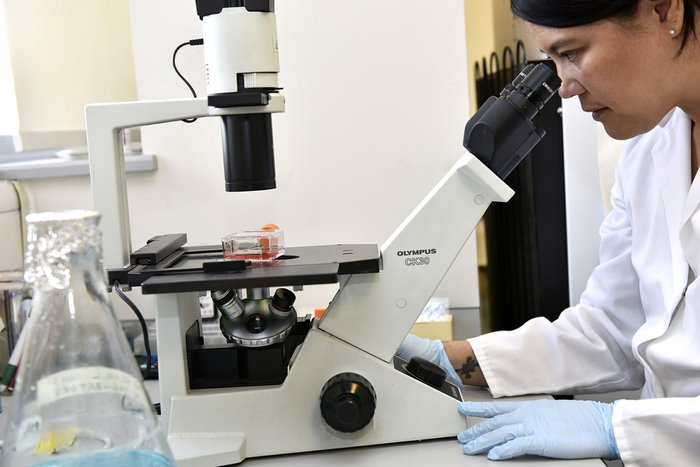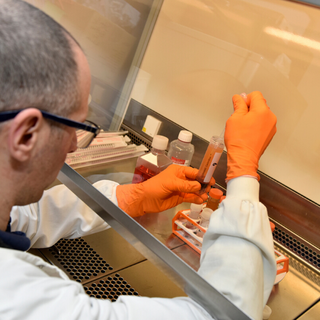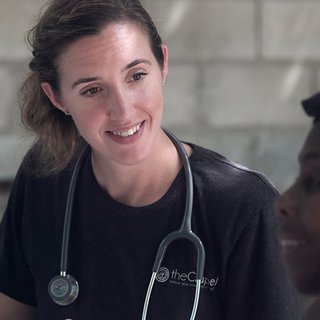Research impact on childhood leukaemia
Tackling childhood leukaemia was the main area of focus for our founders and is where we have some of our biggest research breakthroughs.

The minimal residual disease test: one of the biggest cancer breakthroughs of the last 30 years
In the 1990s we funded two researchers who developed a very sensitive method for detecting cancer cells that are left behind in the blood or bone marrow after treatment. This method is called the minimal residual disease (MRD) test. This test is now used worldwide as the gold standard for assessing how someone has responded to their initial treatment and helps doctors to plan whether they should increase or decrease the intensity of subsequent treatment.
Supporting life-saving childhood leukaemia trials
We’ve played a crucial role in improving survival from childhood acute lymphoblastic leukaemia (ALL). We funded the collection of samples from children with ALL and the research that went hand-in-hand with the UK childhood ALL trials, since the 1970s.
The trial aims to further reduce harmful side effects by testing a different dose and timing of steroid treatment, and to prevent leukaemia returning in the brain by using a different, hopefully less toxic, combination of chemotherapy. The MRD test is also used to see if treatment doses can be reduced, making treatment kinder and reducing long-term side effects. This support has improved how children are treated worldwide.
Understanding different types of childhood leukaemia
One of the significant contributions we’ve made to childhood leukaemia is our work to understand how different subtypes of leukaemia can affect how likely someone’s disease is to progress. This work has enabled doctors to group children according to their level of risk.
Research to refine chemotherapy
In 1994, it was discovered that there can be differences in how the body breaks down chemotherapy drugs, including 6-Mercaptopurine (6-MP), used to treat children with ALL. Some children either get rid of the drug from their body before it can be effective and some don’t break it down quickly enough, leading to harmful side effects. To overcome this, researchers funded by us developed a routine diagnostic test, and gave children a personalised chemotherapy dose, based on the understanding of how they would break down the drug. All children now have this test before treatment, which minimises the risk of harmful side effects such as bone marrow failure.
Understanding what goes wrong in the lead-up to childhood leukaemia
In the mid-1980s, we invested in several specialist units dedicated to understanding the causes of leukaemia, including the Centre for Molecular and Cellular Biology of Human Leukaemia at The Institute of Cancer Research in London, established in 1983 and led by Professor Sir Mel Greaves. During this time, he has published some of the most important advances in our understanding of the origins and evolution of childhood leukaemia.
We now know far more about the events before and after birth that lead to the development of childhood ALL. The hope is that it might be possible to design a preventative vaccine that mimics the protective effects of natural infections in infancy. If this can be done, it means that some, if not all, forms of childhood ALL could one day become preventable diseases.
Finding the root cause of childhood ALL
With our funding, Professor Greaves and his colleague Professor Tariq Enver, were the first to analyse all of the RNA (a type of genetic material) in a single cell. This is now the method of choice for looking at how cancers evolve over time.
The duo continued to delve into how cancers evolve and in 2011, we funded research by Enver and Greaves that showed leukaemia cells evolve constantly by adapting and changing their genetic make-up by gaining new changes in genes over time. This explains why cancers are so difficult to treat: even if you can target a single ‘branch’ (a particular subclone), this work shows that you need to target multiple branches, and some of them can become dominant and resistant to treatment.
This research has redefined accepted wisdom about cancer biology.
Predicting the risk of AML in babies with Down’s syndrome
Blood Cancer UK-funded researchers pinpointed a change in a gene called GATA1, that puts babies with Down’s syndrome at a higher risk of acute myeloid leukemia (AML).
A study by Professor Paresh Vyas and paediatrician Professor Irene Roberts has given many parents peace of mind, because the majority of babies with Down’s syndrome are unlikely to develop leukaemia. It also means that those babies who do have the GATA1 mutation at three months old, and are therefore more likely to develop leukaemia, can be looked after by a specialist team and given treatment as early as possible.
Cancer UK Childhood Leukaemia CellBank
The Blood Cancer UK Childhood Leukaemia CellBank collects, stores, and processes samples from children who have been given a diagnosis of leukaemia. It was established in 2004, in response to a need for researchers to access clinical samples. These samples are invaluable to scientists globally who are looking for new ways to diagnose, treat, and prevent the disease.
Over 98,000 samples have been donated by almost 8,000 children and young adults with different types of leukaemia. Every child who is undergoing tests to diagnose leukaemia will be asked to donate a sample to the Blood Cancer UK Childhood Leukaemia Cell Bank. This means that every child with leukaemia is working to benefit other children who will develop leukaemia in the future.



